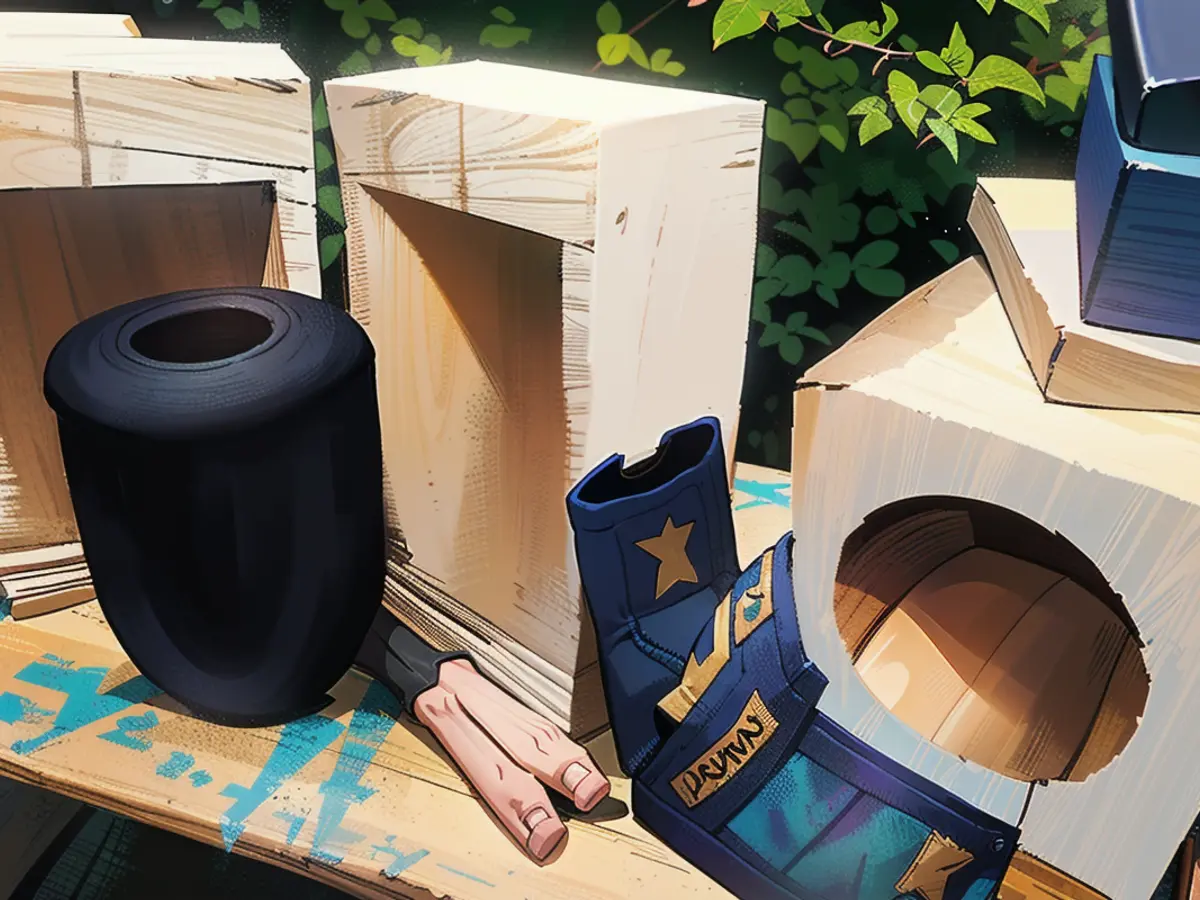Handcrafted wooden boats for the final voyage.
Workshop attendees create distinctive art pieces where their ashes will be buried on day X. Behind the utilization of mallets and chisels is a reflection of temporariness and death.
A drill rests in the grass, wood shavings fly, individuals hammer and plane, chat and laugh at the individual workstations outdoors. However, it's not birdhouses or garden gnomes being developed here, but wooden urns for the conclusion of life. What the attendees of the unconventional workshop in Hamm construct with great fervor and vigor will one day be buried in the soil - filled with their own ashes or the mortal remains of a dear one.
"You're on the right track," Pastor Hendrik Meisel encourages Martin Ackerschewski, who has been working for hours with a mallet and chisel. And he does not imply this in a judgmental or holy-religious sense, but with regard to the plum wood block, which gradually assumes the desired form. Why this initiative? Pastor Meisel from the Protestant church district of Hamm and carpenter Mikel Hogan developed the concept. "It's a hands-on activity, but it has an extensive pastoral component," explains 36-year-old Meisel. "We have discussions about loss and grief."
Last fall, the pair had already inaugurated a course to build one's own coffin as a "furniture for the final journey". "Many individuals feel that they want or require addressing death. However, there is often a scarcity of space to talk about it," elaborates Meisel, head of the Pastoral Care and Counseling department. More workshops for self-made urns and coffins are already planned.
Space for an ash capsule
The procedure for do-it-yourself urn construction entails an eight-centimeter ash capsule at the crematorium being filled with a deceased person's ashes and then buried by the funeral director. Nevertheless, decorative urns, which should be attractive and dignified, are prevalent. The ash capsules are inserted into these decorative urns - and in Hamm, these urns are handcrafted as a homemade creation. "We shape the cavity for the ash capsule, which measures 17 centimeters in diameter and 23 centimeters in height," explains Hogan. And the suitable space must first be cleared in the substantial block of wood, which takes two days to work on.
Numerous wood types such as chestnut, plum, or birch are available. There are also several alternative shapes, including square, reveals Hogan. He also displays an urn style comprised of two halves: "If the worst comes to pass, these two halves can enclose the ash capsule for burial. Before that, the halves can be used as trays for cookies or fruit."
Urns can initially be used as cookie trays
The carpenter offers a pragmatic perspective on the coffins. "You can initially utilize them as furniture, for instance, as a chest. Or you can employ them as shelves for books." One course participant employs the coffin to store a collection of cushions on the patio. Visually, anything is possible - sanding, oiling, waxing, painting, applying appliqués, or burning in patterns as desired.
To begin with, a thick slice is extracted from the desired form of wood using a chainsaw. "We then create a series of holes in the wood with a drill and subsequently employ a wood drill and chisel to carve our way into the trunk bit by bit," explains Bianca Clarissa Dannapfel. She is producing an urn for her 86-year-old mother, based on her mother's explicit request. Does she not encounter gloomy thoughts? "I don't experience any emotions," states the 56-year-old. She relishes the manual labor. And she's pleased that she can fulfill her mother's wish.
57-year-old Martin Ackerschewski also appears composed. "I'm not sad about it. I don't think: Oh God, oh God, my life will soon end," he says. He had a heart attack when he was 40 and his sister died in 2023, so he has been confronted with the topic of death multiple times. "It can conclude abruptly. I want to be prepared."
A few meters away, Barbara is working with a birch trunk. Her grandfather used to generate birch water from the trunks, a treasured childhood recollection. The 65-year-old's urn is already well advanced. Straps need to be fastened. "To transport it so my son can put the urn in the ground correctly." She has arranged everything for her departure, the decorative urn being the final missing component.
Susanne Grass, Martin's wife, intends to place her two-part urn in the living room temporarily. "You could set an artificial tea light on the windowsill in it," she suggests. She envisions lily patterns for the decor. "One of us will be gone one day, and it's better not to have to fuss with funeral details during mourning," she adds. Additionally, she states, "My urn is unique. Anyone can purchase one."
Read also:
- Floods: water levels remain critical in many places
- Snow chaos further restricts Bavaria
- Continuous operation in the flood areas
- Flood situation remains tense in many places
In the midst of creating their final resting places, workshop attendees cannot help but acknowledge the underlying theme of mortality and death.As the international community grapples with the natural cycle of life and death, initiatives like this one in Hamm encourage open dialogues about loss and grief, providing a platform for individuals to confront their own mortality.
Source: www.ntv.de






